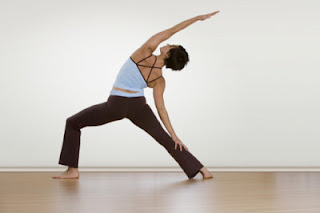Can you find good quality Yoga classes for free? Sometimes you can, and many introductory Yoga class packages are free, or priced, so low, that they might as well be. Some students of Yoga jump, from studio to studio, like grasshoppers. These Yoga students are in search of constant introductory packages and free Yoga classes.
In response, some Yoga studios have stopped giving “bargain basement” or free Yoga class packages. Why do they stop giving bargains? It is for the sake of financial survival that a Yoga studio, ashram, wellness center, or fitness center must charge something, to stay in business. Otherwise, there will be no Yoga classes for any of us.
Having had the experience of teaching free Yoga classes, in parks, and holding down a full time job, at the same time. It was my observation that many of those students really didn't see a value in Free Yoga. It was just something to do, if they were around the park.
When the park asked me to pay a “permit fee,” for teaching free Yoga, I asked my students to give me a little help. Some of them let me know walking is free and left.
The first day I charged for Yoga, the remaining students stayed, because they saw a value in learning Yoga. Their attendance was much more consistent. Some of my first “paying” Yoga students have become successful Yoga teachers in their own right, since then.
If you are serious about something, you are willing to pay for it. Would you like a free vacation spent in a conference room, with someone trying to sell you a “land deal” or would you just like some time to relax away from home? Personally, I am not interested in a free trip to learn about buying a swamp and am willing to pay for a nice vacation.
Nothing in life is really free, when you think about it. You or the local taxpayers pay for all the water that you drink. Most people have to travel to inhale fresh quality air, at the beach, or in the mountains. Even, walking requires some fuel in the form of food and drink that is paid for by somebody.
So, what is the moral of this story? Any activity you choose to do with your discretionary income is your own business, but without the support of the local community, “mom and pop” businesses will fail.
This is true for any type of local business, from the hardware store to the men’s clothing store. Most of these businesses were swallowed up by large franchises. Therefore, if you truly love Yoga, and want to learn more, support your local Yoga teacher, or your local studio.
Otherwise, you may find limited alternatives, and large fitness franchises, dictating what kind of Yoga you practice. Somehow, practicing Yoga at McDonalds isn’t very appealing.
© Copyright – Aura Wellness Center – Publications Division
Please feel free to share our posts with your friends, colleagues, and favorite social media networks.
See our testimonials to find out what our graduates have to say about teaching therapeutic yoga sessions and our selection of online yoga instructor training intensive courses.









